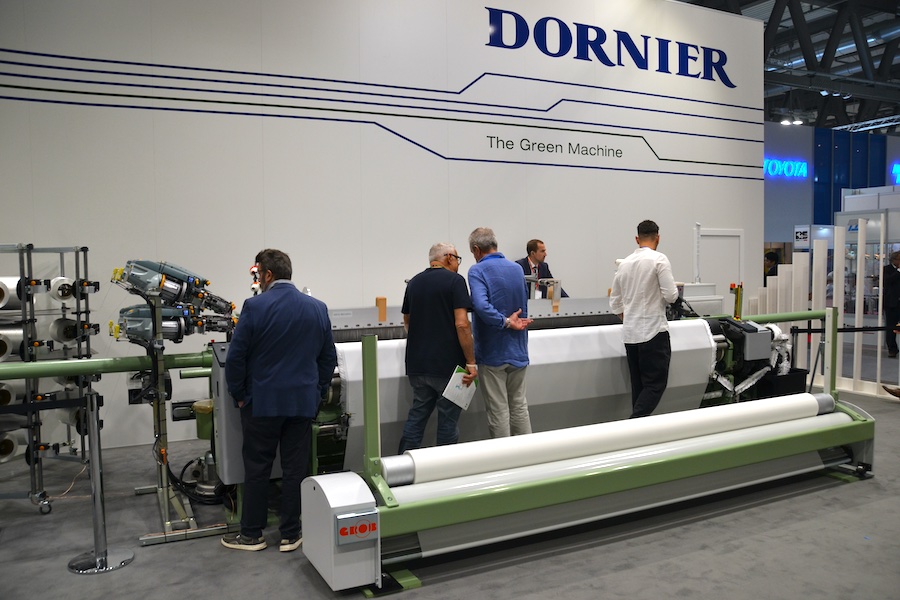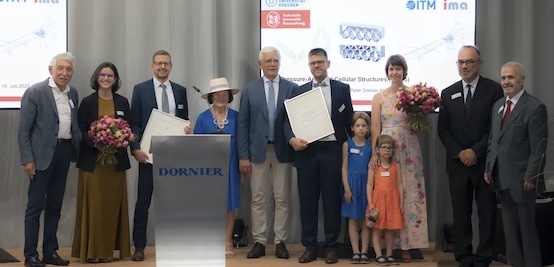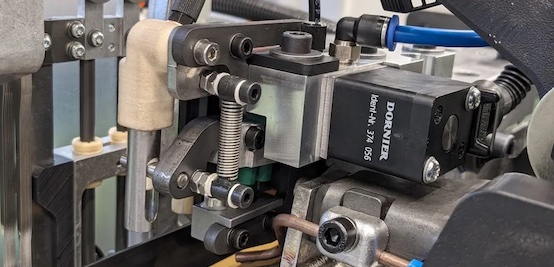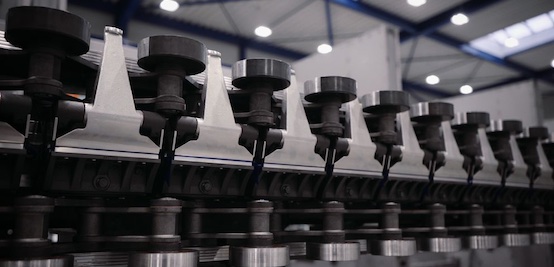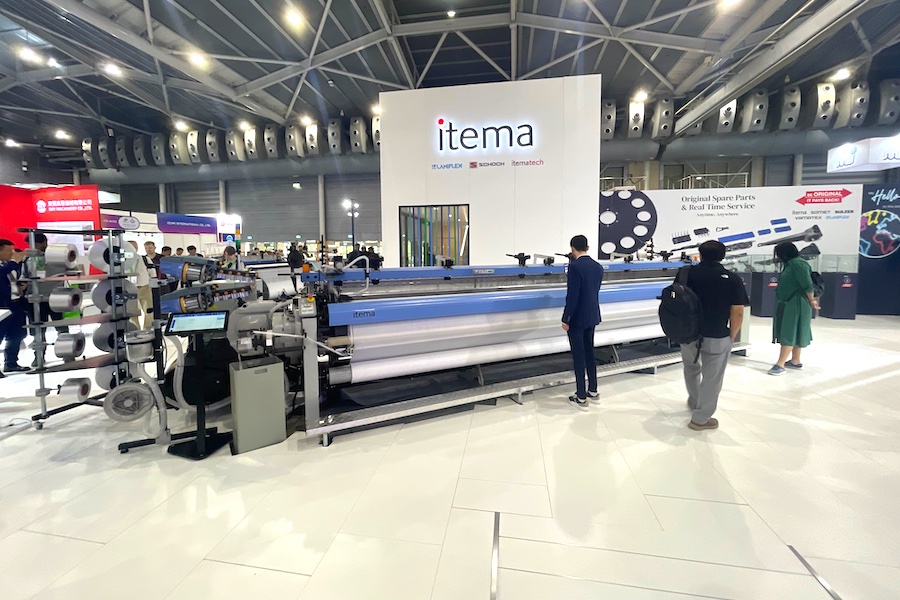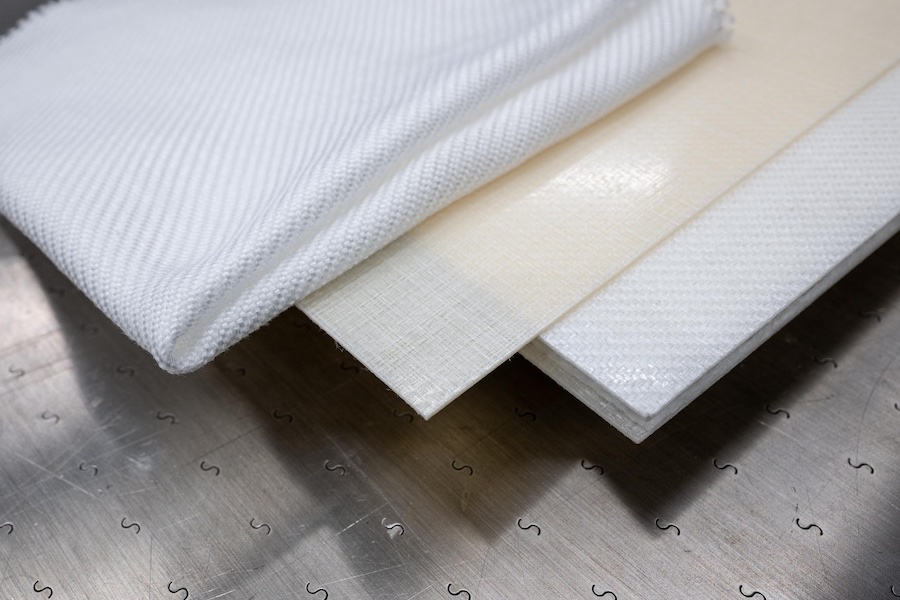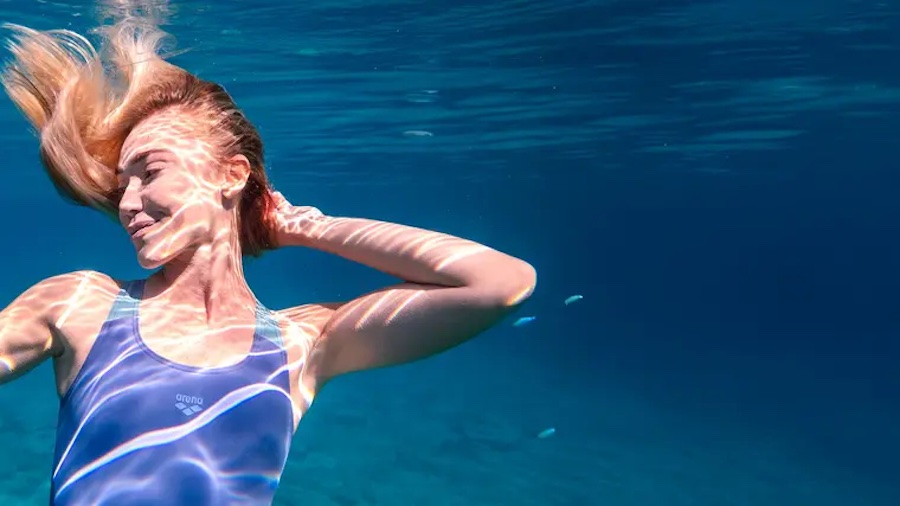#Weaving
Peter Dornier Foundation Prize 2024 honours new technologies for the direct production of shell-shaped complex 3D fabrics
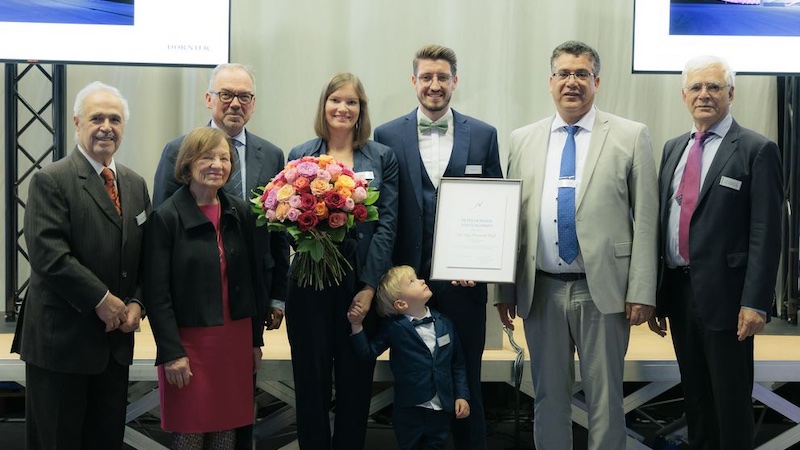
Process in lightweight construction:
According to a study published by the Federal Ministry of Economics in July 2024 on the economic importance of lightweight construction in Germany, goods and services involving lightweight construction worth almost 360 billion euros were produced in Germany in 2019. According to the study, this corresponds to a share of around 5.5 percent of the total German gross production value. These figures underline the growing importance of fibre-reinforced plastic (FRP) components for the sustainable transformation. “Whether air plane turbine blades, trunk lids, ship's hulls or wind turbine blades – lightweight yet stable FRP components help to save weight, material and energy in numerous applications”, says Dominik Nuß, Research Group Leader for Weaving Technology at the Institute of Textile Machinery and High Performance Materials Technology (ITM) at TU Dresden. For these applications, frequently carbon or glass fabrics are used according to him. He explains: “Numerous lightweight construction applications require shell-shaped components with geometries that cannot be unwound, but until now these could not be woven directly.” But that could now change.
Air plane turbine blades emerging directly out of the weaving machine
“For FRP components made of carbon with complex geometries, it is customary to produce reinforcement fabrics, manually cut them into many small pieces reassembled in the desired shape, draped and cured with plastic.“ A time-consuming and resource-intensive process that Mr Nuß as textile mechanical engineer strives to optimize. As part of his doctorate Dominik Nuß developed a completely new weaving process permitting to produce for the first time as a whole near-net-shape fabrics made of high-performance fibres such as aramid, glass or carbon for complex shell-shaped lightweight components. First of all, Mr Nuß used a weaving process that foregoes the classical fabric take-off. In addition, he developed a flexible weaving reed which allows the fabric width to be adjusted to the component width during the weaving process. Mr Nuß elaborates: “Thanks to the take-off-free and width-variable weaving process, complex 3D geometries such as turbine blades can be produced directly on the weaving machine – the time-consuming and waste-producing cutting and laying processes are thus completely eliminated”.
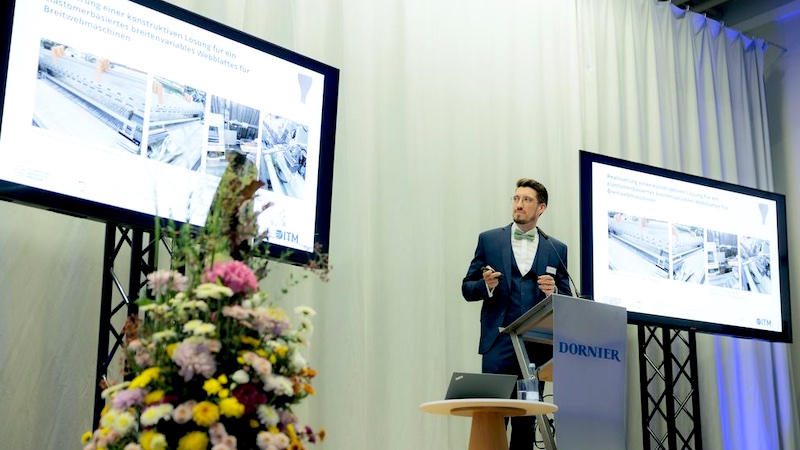
“Process revolutionizes the production of reinforcement fabrics”
For his dissertation titled “New processes for the integral production of shell-shaped fabric structures: Technologies, methods and machine development” the textile researcher now received the Peter Dornier Foundation Prize 2024, endowed with 5,000 euros. The scientist expressed it to be a special distinction for him: “The prize is a great honour for me. Being awarded by the company manufacturing the machines my developments are based upon is something really special – because, as we all know, nobody is more critical than a jury that is itself expert in the field.”
Adnan Wahhoud, the jury chairman and laudatory speaker, who headed the air-jet weaving machine development department at DORNIER for 26 years, explained the decision at the award ceremony: “The process revolutionizes the production of reinforcement fabrics using completely new approaches and shows possibilities in fabric production that have never been realized before. Mr Nuß uses the flexibility of the DORNIER weaving machines and sets a new standard in the production of fabrics for lightweight construction.” Mr Nuß carried out his trials on a modified DORNIER rapier weaving machine and a Jacquard machine from the Stäubli company.
Important contribution to sustainability and resource efficiency
Maja Dornier, Chairwoman of the Peter Dornier Foundation and wife of the founder Peter Dornier who passed away in 2002, paid tribute to the award-winning work when welcoming around 100 guests to the DORNIER Weaving Technology Center:
“The new weaving process makes an important contribution to greater resource efficiency in the modern lightweight construction industry and thus contributes to sustainability”. She emphasized: “Foundation founder Peter Dornier would have been delighted that the doctoral thesis combines innovative achievements in the field of fabric production with lightweight construction in aviation and aerospace.”
His son Peter D. Dornier, Chairman of the Supervisory Board and previously long-standing CEO of Lindauer Dornier GmbH as well as member of the Advisory Board of the Foundation, paid tribute to his father's lifetime achievement: As second eldest son of aviation pioneer Claude Dornier, Peter Dornier not only set technological milestones as an aircraft designer, but - as founder and for decades CEO of the internationally operating weaving machine and special machine manufacturer - he initiated as early as the 1960s the development of weaving technologies that lead to the foundation of the new division “Composite Systems” in 2014 under the leadership of Peter D. Dornier. In this business division, DORNIER develops and manufactures highly complex weaving machines which, among others, suppliers for the demanding aerospace industry use to produce 3D fabrics in series with process reliability and scalability.
For the first time: Weaving of carbon crash parts in one piece
According to laureate Nuß, not only turbine blades, half shells for safety helmets or entire sports and sailing boats can be manufactured in one piece using his award-winning process. He considers his weaving process to be particularly suitable for a special FRP application: Energy Absorbing Crash Structures, or EACS for short. Such crash components can be found in bumpers or in the front end of cars, in aircraft wheel systems, in rail vehicles and even in elevators. They are usually made of metal or carbon and absorb energy in the event of an impact to protect the occupants. Dominik Nuß is convinced: With his new weaving process EACS components of carbon could be given a significantly better absorption capacity. “Up to now, it has mainly been about the thickness of the carbon fabric - complex curvatures for a geometry-optimized cross-section to improve crash behaviour cannot currently be produced with any weaving process,” explained the laureate at the award ceremony. That is the reason why he recently launched a research project on his work that was now awarded the Foundation Prize. He wants to find out how carbon can be used to weave more complex EACS components with optimized pleat geometry “in one piece”, which should be significantly more efficient than conventional EACS components.
The Peter Dornier Foundation Prize
The idea of the Peter Dornier Foundation Prize goes back to Peter Dornier (1917-2002), the founder of Lindauer DORNIER GmbH. Since 2021, the prize has been awarded to young people for outstanding scientific work in the fields of textile, film and composite technology as well as aviation and aerospace. Funding medical research is just as much a part of the foundation's purpose as supporting hospices for a self-determined and dignified life until the end.



